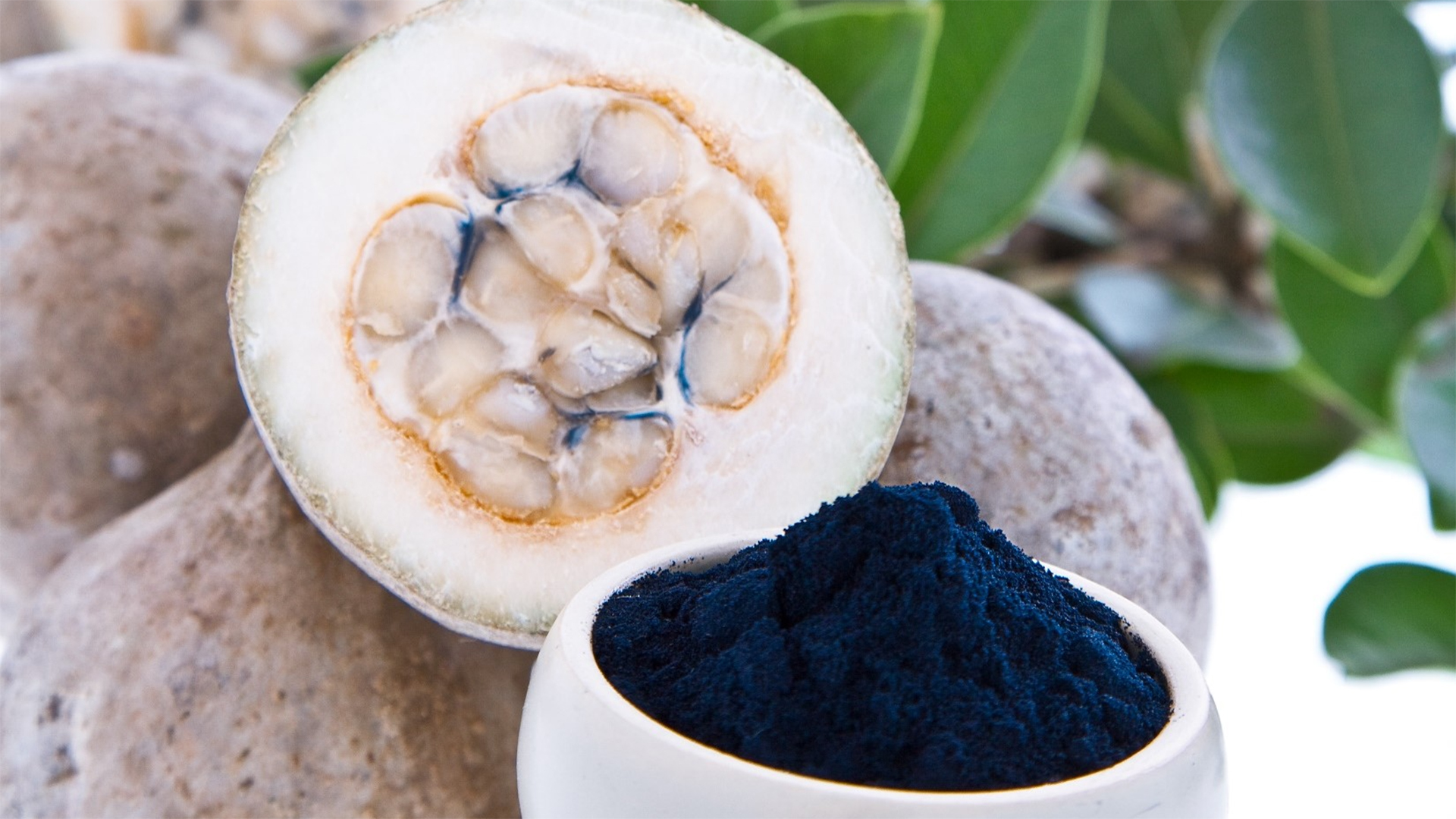
A holy grail in food colour and food safety
Unique natural blue food colouring from Colombia included in Codex food safety standards
A unique natural blue food colouring from the fruit of a semi-deciduous tree growing in the forests of Colombia has become a “holy grail” of food colouring for the food industry. ©Ecofolora S.A.S
05/06/2025
It comes from a fruit about the size of a kiwi or a guava, growing on a semi-deciduous tree called the Genipa americana in the forests of Colombia. Opening a new chapter in the chronicle of food safety, it’s a “holy grail” in the food industry, the first ever blue food colouring to be natural in origin and resistant to acids.
When the pulp of the unripe jagua fruit is exposed to air, it turns dark blue in colour. The pigment has been widely used by various Indigenous Peoples in South America to paint their skin and dye their clothes, ceramics and some foods.
Now it’s been hailed by the food industry as the one remaining natural food colour needed to complete the entire spectrum.
Crucially for its commercialization, it was recently included in the Codex Alimentarius, or “Food Code”, a collection of standards, guidelines and codes of practice established over 60 years ago by a joint commission of the Food and Agriculture Organization of the United Nations (FAO) and the World Health Organization (WHO).
The jagua blue food colouring was developed in Colombia by a private company that set about creating and collecting the data needed for the scientific assessment of the safety of this food additive.
After a thorough scientific evaluation and confirmation that it was a product for which there was a need, jagua blue has been permitted for use under the Codex standard governing food additives, which covers everything from confectionery to breakfast cereals.


Inclusion of jagua blue in the Codex Alimentarius food safety standards has potential to boost Indigenous Peoples’ livelihoods and help conserve biodiversity. Left/top: ©Creative Commons/ Alejandro Bayer Tamayo. Right/bottom: ©Creative Commons/Alex Popovkin
For Colombia, the jagua blue standard is a big deal. Officials there predict that the inclusion of jagua blue in the Codex Alimentarius can help improve the economic wellbeing of Indigenous Peoples who have used the colorant for generations. Particularly hoping to benefit are the Emberá Indigenous Peoples, many of whom have traditionally lived on the riverbanks of the densely forested northwestern Chocó region.
Whatever the production model, Colombia hopes the safety standard can open up new markets and opportunities as well as drive biodiversity conservation and the adoption of sustainable agricultural practices.
From a food safety perspective, the inclusion in the Codex Alimentarius is clearly of great significance and is “an illustration of the dizzying variety of foods and food ingredients which circulate all around the globe today and for which the Codex food code plays an essential role in making sure that consumers and traders can feel confident about their safety and quality,” says Sarah Cahill, Secretary of the FAO/WHO Codex Alimentarius Commission. “Good science and risk assessment are key to ensuring that Codex can play that essential role.”
Codex Alimentarius texts protect consumer health and ensure fair practices in international food trade. This trade across the planet has existed for thousands of years but over the last century the amount of food traded internationally has grown exponentially.

Because of the profound implications for the consumer public and for markets, setting standards for jagua blue or other food stuff is no simple business. © Creative Commons/ Cody H.
Is a food safe or not?
The process of setting standards for something like jagua blue or anything else, because it has such profound implications for the consumer public and for the markets, is no simple or quick business.
The way scientists go about it is by making an evidence-based study of all possible hazards that a foodstuff might present. They then assess any possible risk to consumers by combining that with the information about the amount consumed and toxicological data on the maximum levels at which there is no unacceptable risk to humans.
The toxicological assessment and establishment of specifications for jagua blue was carried out by a joint FAO/WHO expert committee, which took several years to reach a final agreement on the all-important safety parameters.
All Codex texts are underpinned by science, as exemplified by the process which jagua blue went through.
Science, plus the core values of transparency, inclusivity, collaboration and consensus building, are all fundamental to maintaining the Codex Alimentarius Commission’s key role as the international reference for food safety and the primary source of science-based food standards for many countries. It also helps underpin FAO’s unique role of overseeing all aspects of the food chain and making sure that all of us can feel more confident about the food we eat.
Related links
Learn more
- Website: Codex Alimentarius
- Website: World Food Safety Day – 7 June

